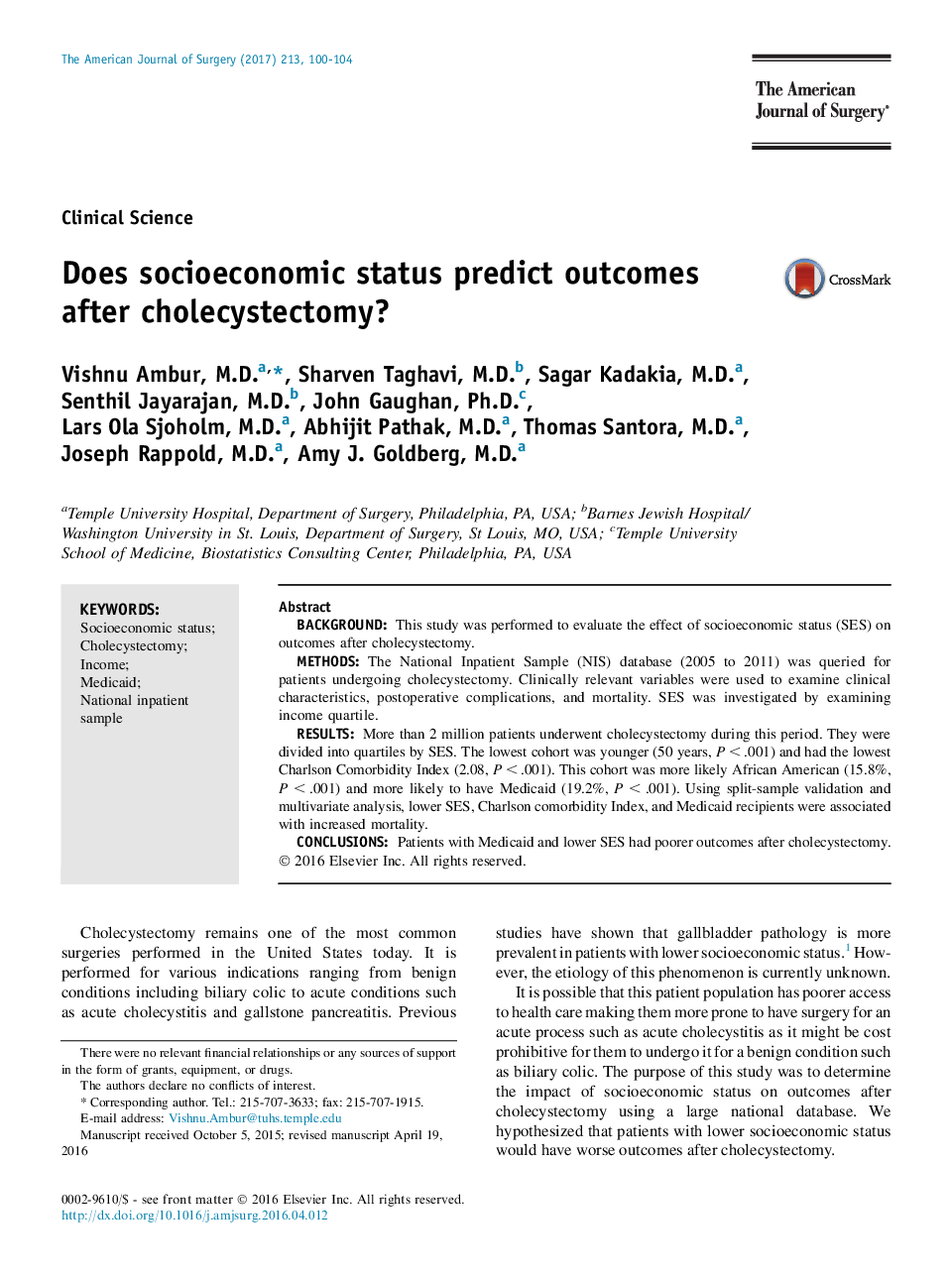| Article ID | Journal | Published Year | Pages | File Type |
|---|---|---|---|---|
| 5731171 | The American Journal of Surgery | 2017 | 5 Pages |
â¢Gallbladder disease is more prevalent in patients with lower socioeconomic status.â¢We investigate the impact of socioeconomic status on outcomes after cholecystectomy.â¢Socioeconomic status was associated with increased postoperative mortality and morbidity.
BackgroundThis study was performed to evaluate the effect of socioeconomic status (SES) on outcomes after cholecystectomy.METHODSThe National Inpatient Sample (NIS) database (2005 to 2011) was queried for patients undergoing cholecystectomy. Clinically relevant variables were used to examine clinical characteristics, postoperative complications, and mortality. SES was investigated by examining income quartile.ResultsMore than 2 million patients underwent cholecystectomy during this period. They were divided into quartiles by SES. The lowest cohort was younger (50 years, P < .001) and had the lowest Charlson Comorbidity Index (2.08, P < .001). This cohort was more likely African American (15.8%, P < .001) and more likely to have Medicaid (19.2%, P < .001). Using split-sample validation and multivariate analysis, lower SES, Charlson comorbidity Index, and Medicaid recipients were associated with increased mortality.ConclusionsPatients with Medicaid and lower SES had poorer outcomes after cholecystectomy.
